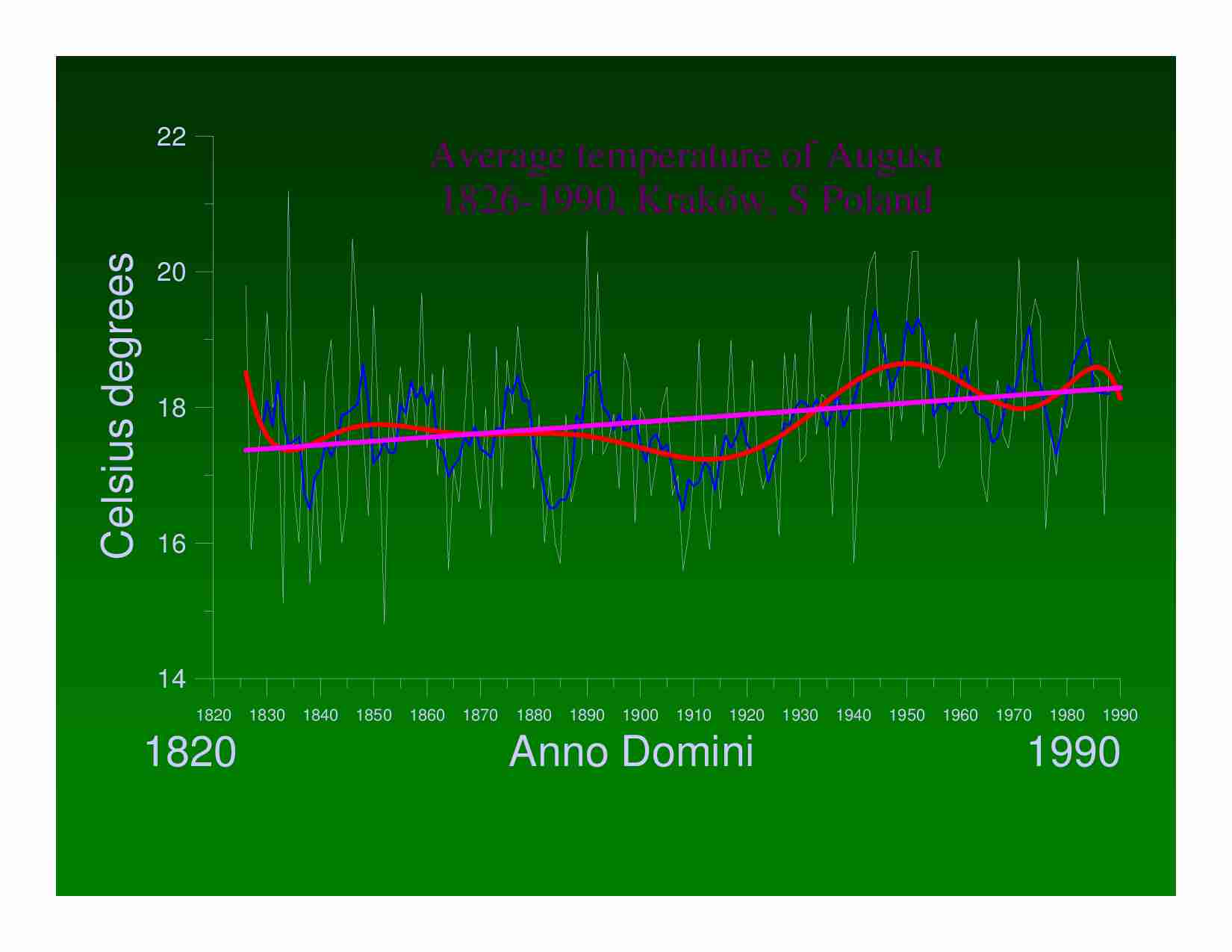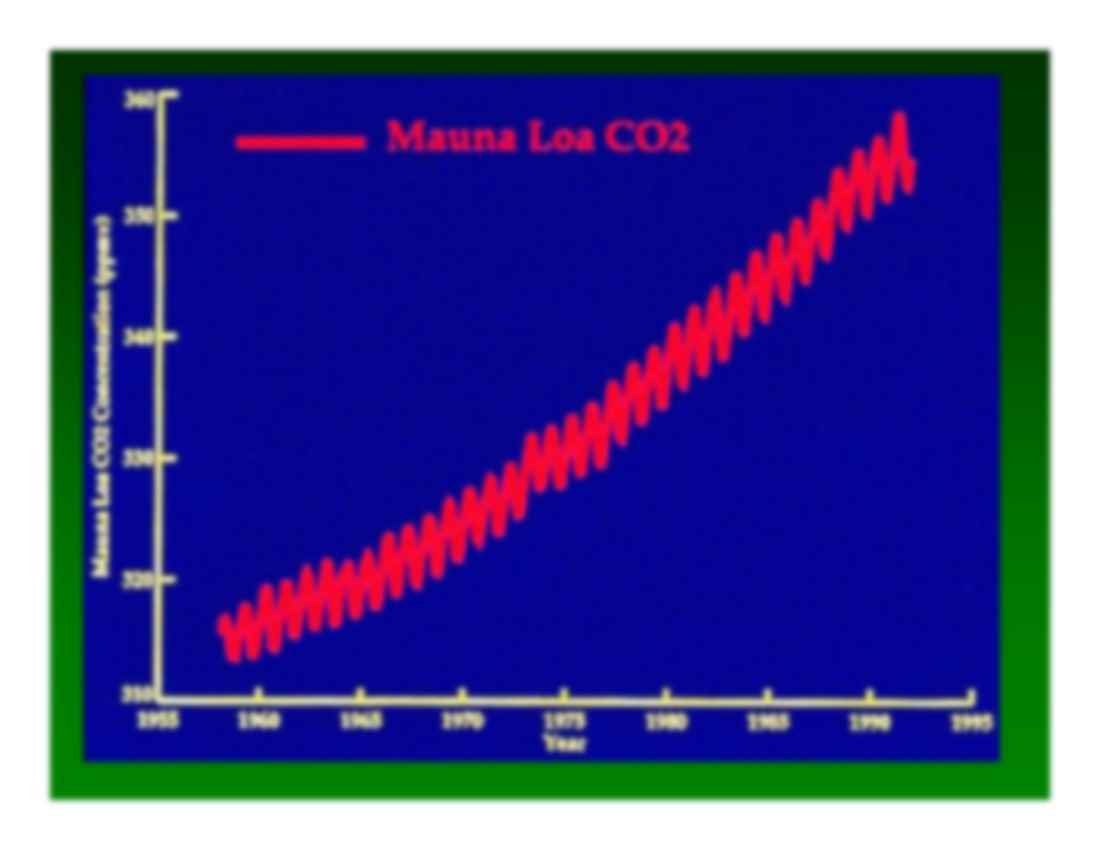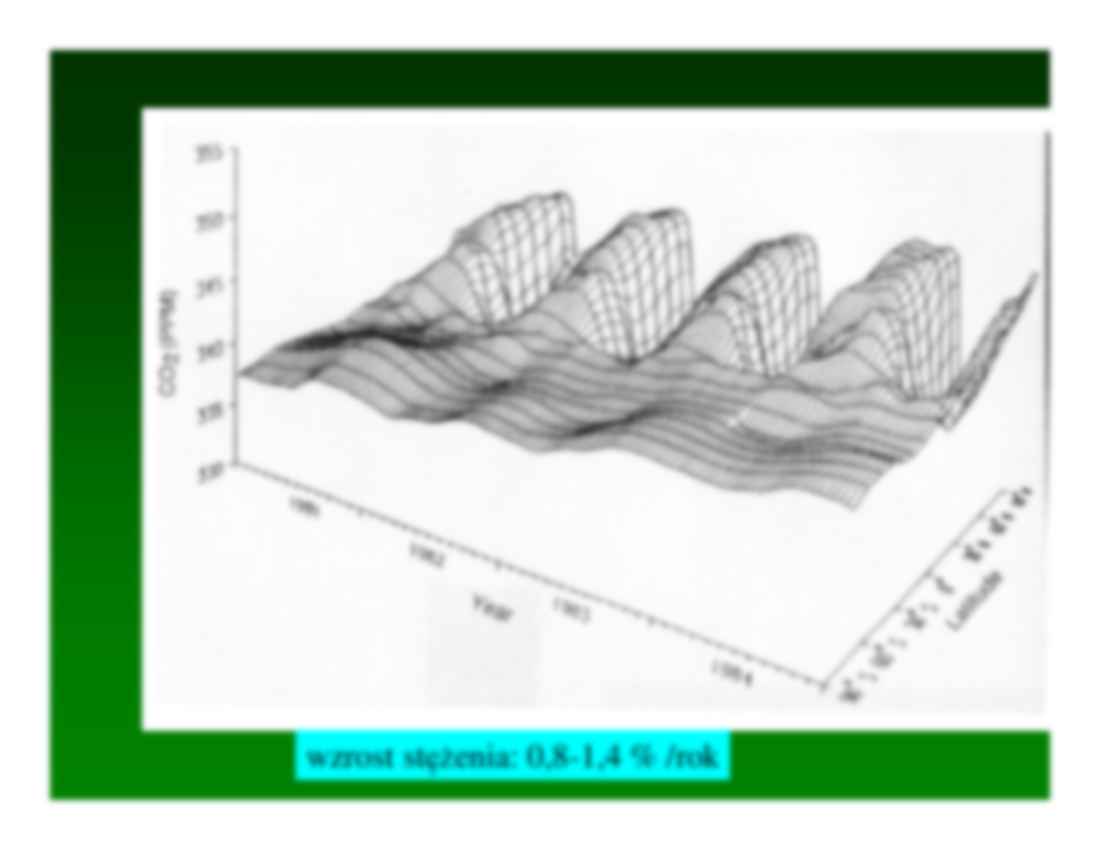To tylko jedna z 13 stron tej notatki. Zaloguj się aby zobaczyć ten dokument.
Zobacz
całą notatkę



Celsius degrees
22
Average temperature of August
1826-1990, Kraków, S Poland
20
18
16
14
1820
1820
1830
1840
1850
1860
1870
1880
1890
1900
1910
1920
Anno Domini
1930
1940
1950
1960
1970
1980
1990
1990
wzrost stężenia: 0,8-1,4 % /rok
Seasonal δ13C variations of
atmospheric CO2
from five northern hemisphere stations
Ebullitive methane
1E-1
1E-2
1E-3
1E-4
1E-5
1E-6
0
1993
1E+0
[dial ebullition of methane in: g of carbon from 1 cubic meter of sediments]
93.06.16-07.03
93.07.03-10.29
200
93.11.18-03.07
2.8m
4.2m
4.5m
9.0m
depth of water,
till 07/1997
1994
400
600
94.08.01-12.20
94.12.20-95.02.25
95.02.25-05.20
1995
800
95.05.20-07.02
95.07.02-07.19
95.07.19-10.07
3.9m
1997
1400
depth of water,
after the flood
of July 1997
1200
96.04.19-97.04.19
Methane from
freshwater
lake sediments,
Nowa Cerekiew
95.10.07-96.04.19
1996
1000
Time ralative to 1993.06.01 [days]
94.03.07-06.05
94.06.05-06.09
94.06.09-06.24
1600
97.04.19-97.06.25
97.06.25-97.08.09
97.08.09-97.09.05
97.09.05-97.09.21
δ 13 C bubble methane
[‰]
-45
-50
15:02
12:00
11:40
18:00
17:55
21:00
09:09
07:00
03:00
00:00
-55
21:04
-60
depths and dates
-65
-70
0.15 m, 94.07.03-04
0.7 m, 94.07.03-04
Lake Sulistrowiczki,
SW Poland
0.25 m, 95.08.01-03
0.7 m, 95.08.01-02
-75
12:00 18:00
24/0
6:00
12:00 18:00
24/0
6:00
time [hours]
94.07.03
95.08.01
/ 94.07.04
/ 95.08.02
/95.08.03
Does oxidation of methane
may result in substantial
precipitation of carbonates ?
depth of the water column [m]
0
-4
----------------------------------------thermocline
-8
Mixing of benthic and surface waters
compared to stagnation periods
sampling in mid-day
mixing, 103 of data points
stagnation, 101 of data points
-12
Bubble methane from lakes and rivers
Bubble methane from lakes and rivers
-80
-70
13
δ
-60
-50
C bubble methane [‰]
-40
-30
Własności produktów naftowych
zwiększające zagrożenie jakości wód
•Większość związków jest toksyczna lub ma charakter
kancerogenny
•Relatywnie łatwa rozpuszczalność niektórych
związków w wodzie (np. rozpuszczalność benzenu
wynosi 1780 mg/dm3)
•Zwykle prędkość przepływu przez grunt jest około 2x
większa niż dla wody
•Zwykle mogą przenikać przez grunty, które dla wody
są praktycznie nieprzepuszczalne
... zobacz całą notatkę






Komentarze użytkowników (0)